Disclaimer: New EUDR developments - December 2025
In November 2025, the European Parliament and Council backed key changes to the EU Deforestation Regulation (EUDR), including a 12‑month enforcement delay and simplified obligations based on company size and supply chain role.
Key changes proposed:
These updates are not yet legally binding. A final text will be confirmed through trilogue negotiations and formal publication in the EU’s Official Journal. Until then, the current EUDR regulation and deadlines remain in force.
We continue to monitor developments and will update all guidance as the final law is adopted.
Disclaimer: 2026 Omnibus changes to CSRD and ESRS
In December 2025, the European Parliament approved the Omnibus I package, introducing changes to CSRD scope, timelines and related reporting requirements.
As a result, parts of this article may no longer fully reflect the latest regulatory position. We are currently reviewing and updating our CSRD and ESRS content to align with the new rules.
Key changes include:
We continue to monitor regulatory developments closely and will update this article as further guidance and implementation details are confirmed.
Key takeaways:
As we hit autumn months 2025, climate regulations like the EU Corporate Sustainability Reporting Directive (CSRD) are no longer new, reporting has started for large companies, and investor and stakeholder scrutiny is increasing.
According to Morgan Stanley 88 % of individual investors, especially high-net-worth ones, say they’re now “very” or “somewhat” interested in sustainable investing.
While the EU’s “Stop the Clock” amendment delayed some European Sustainability Reporting Standards (ESRS) requirements and pushed timelines for certain entities, expectations around transparency and data quality remain higher than ever. In fact, 70 % of supply chain experts predict increasing investor pressure for improved sustainability reporting and transparency.
These stats make it clear that carbon accounting has shifted from a “nice to have” to a core operational capability.
Whether you’re preparing your first ESRS report or optimizing supplier-level Scope 3 tracking, the right software can save you serious time, risk, and overhead.
In this updated summer edition, we walk through 12 top carbon accounting tools in 2025, covering features, pricing, and ideal use cases to help you choose the best fit for your team.
As climate regulations mature and disclosure expectations tighten in 2025, carbon accounting has become a core part of business operations.
Here’s a quick snapshot of all the tools we’ll be covering in this article:
Carbon accounting, also known as greenhouse gas accounting, is the process of calculating the total amount of carbon dioxide (CO2) emitted by your company. Like financial accounting, it allows you to quantify the impact of your business activities, but instead of financial impact, it focuses on environmental impact.
By translating your business’s environmental impact into numbers, you can bring more accountability to your sustainability efforts. This gives stakeholders like customers, investors, and employees something tangible to support and evaluate your progress. It also makes it easier to identify reduction opportunities and comply with evolving regulatory requirements.
Carbon accounting software is a digital solution designed to measure, analyze, and manage greenhouse gas emissions that a company produces through its operations. These emissions are categorized into:
As compliance with global regulatory standards such as the EU CSRD (Corporate Sustainability Reporting Directive) and TCFD (Task Force on Climate-related Financial Disclosures) becomes crucial, carbon accounting software helps in transparent and efficient reporting.
In addition to facilitating compliance, these platforms can enhance a company's ability to attract talent seeking environmentally responsible employers.
Engaging stakeholders - from suppliers and partners to customers - is another key benefit, allowing them to better understand a company's commitment to sustainability and, in turn, fostering stronger relationships.
Choosing the right carbon accounting software can be a decisive factor in an organization's sustainability journey. This choice extends beyond merely selecting a tool for tracking emissions – it's about finding a comprehensive solution that aligns with your company's environmental commitment and business objectives.
Without the correct software, businesses risk non-compliance, potential fines, and a damaged reputation.
The right carbon accounting software can also support strategic decision making by providing valuable insights into a company's carbon intensity. It will highlight areas for improvement and assist in creating effective decarbonization strategies, fostering a proactive approach to carbon reduction.
These insights can be a powerful driver of innovation and trigger new, future-proof approaches to conducting business. Without further ado, here’s our list of the best carbon accounting software of 2025.
While the growing adoption of carbon accounting is a great step towards tackling the climate crisis, measuring carbon emissions is a complex process.
Using standardized frameworks like the Greenhouse Gas (GHG) Protocol or Carbon Disclosure Project (CDP) can give you the tools to measure these emissions effectively. This ensures your efforts align with the latest industry standards for accuracy and comparability.
However, for smaller companies without a well-resourced sustainability team, tackling carbon accounting in house can be a time-consuming and expensive process. Plus, relying on old-school spreadsheets is also error prone.
Carbon accounting software is designed to streamline, digitize, and automate the process. It turns a somewhat overwhelming task into something manageable – allowing you to focus your efforts on reducing emissions, with peace of mind that your accounting is accurate.
How to choose the right carbon accounting software in 2025?
When selecting carbon accounting software in 2025, your criteria should reflect the evolving regulatory landscape and internal governance needs. Key factors to evaluate:
Beyond 2025-specific needs, the fundamentals still apply:
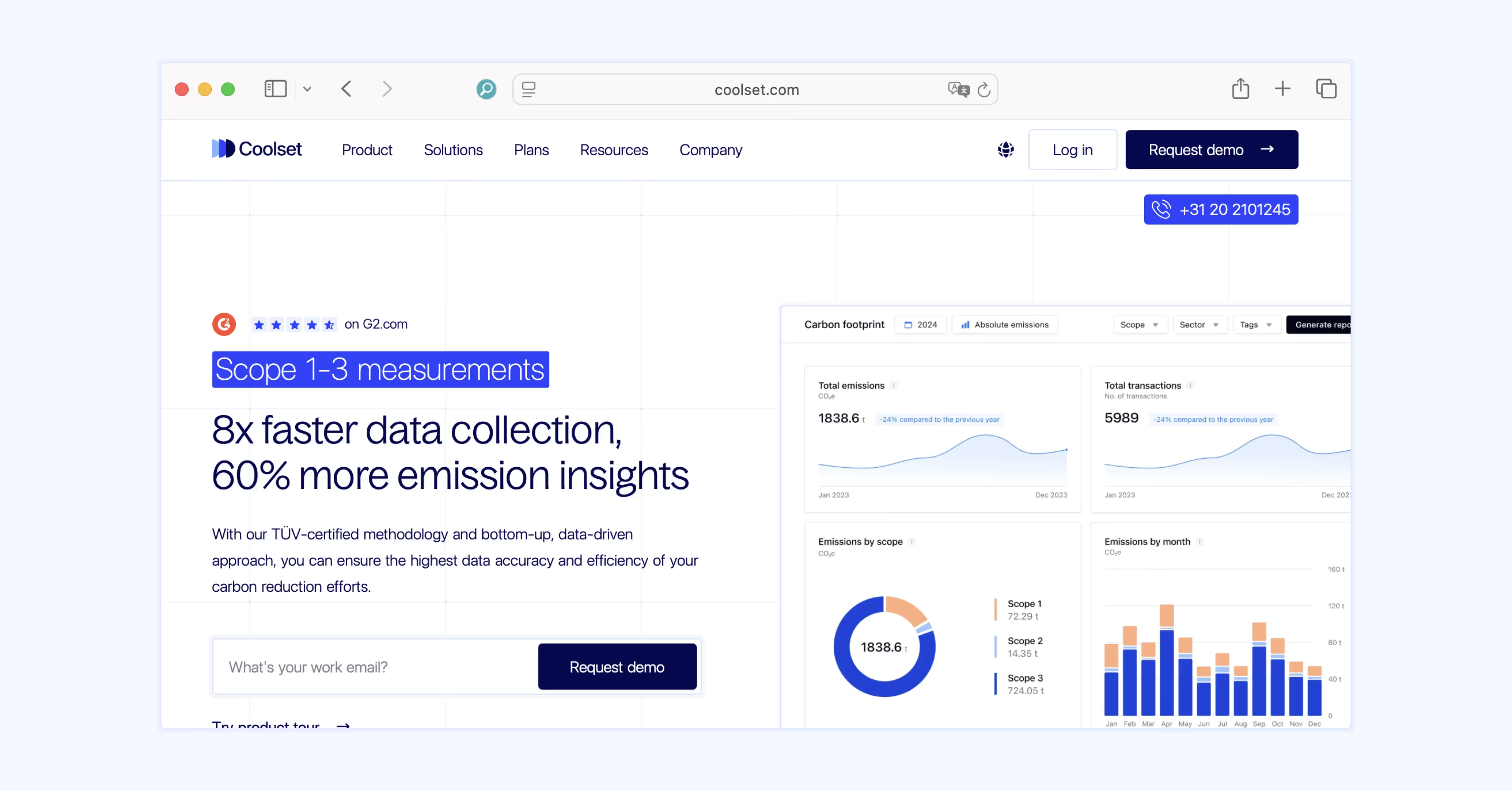
Coolset is a carbon and ESG management platform built to help sustainability and compliance teams measure emissions, identify hotspots, and drive carbon reductions with confidence. It automates Scope 1, 2, and 3 emissions tracking using TÜV Rheinland–certified methodology and supports science-aligned reduction planning across supply chains.
Designed for small teams with complex needs, Coolset replaces spreadsheets with a streamlined, collaborative workspace. The platform includes built-in workflows, smart autofill, and scenario modeling to simplify data collection, forecasting, and audit-ready reporting.
Amsterdam, Netherlands
Mid-market businesses and sustainability consultants
Sustainability or finance lead; minimal IT involvement thanks to intuitive UX, automation, and integrations
€6,000 – €30,000 annually; zero implementation fees.
{{product-tour-injectable}}
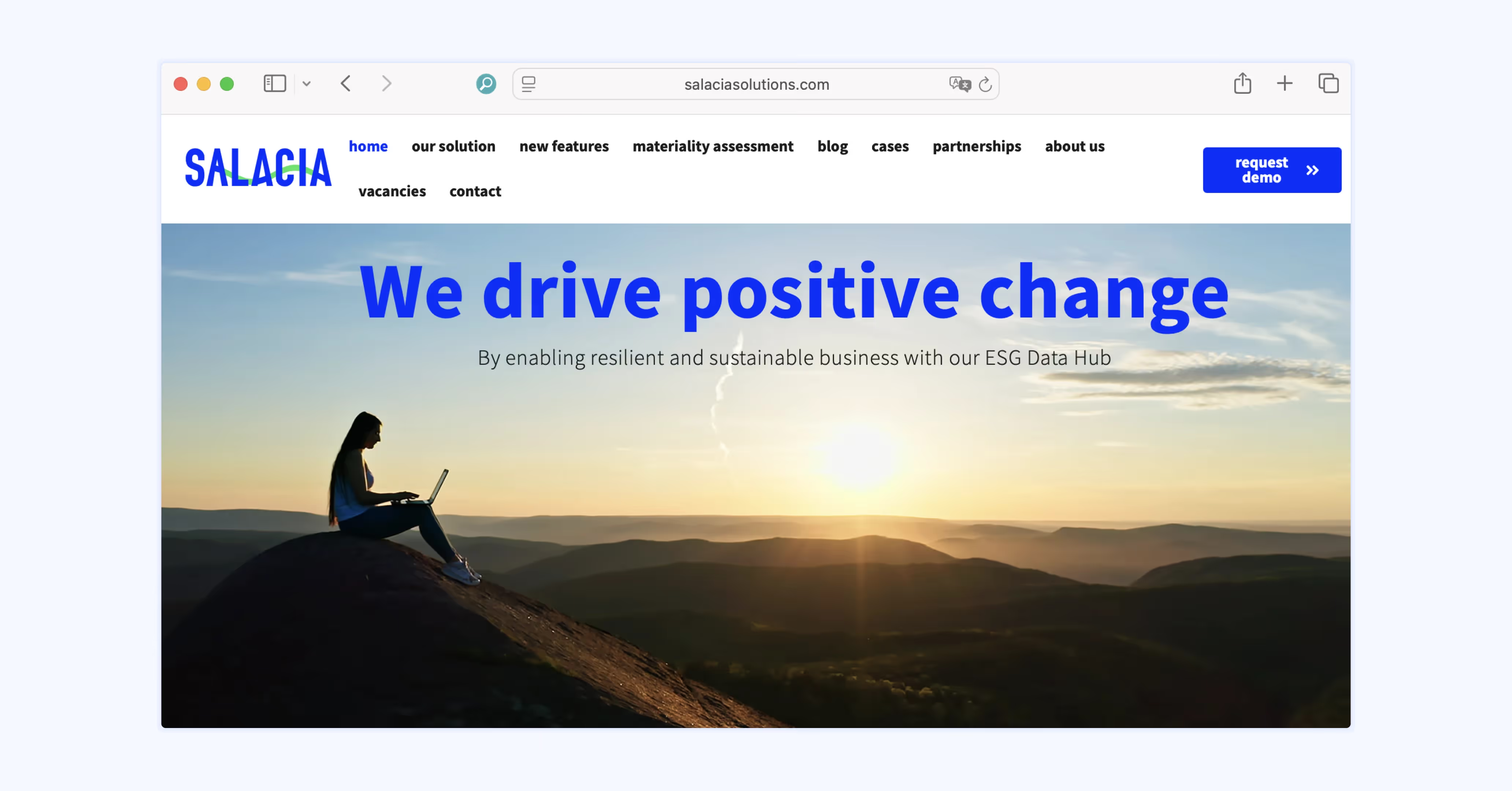
Salacia Solutions is a B Corp certified SaaS platform (founded 2021, Rotterdam HQ) that automates ESG and GHG reporting aligned with EU legislation like CSRD, SFDR, and GHG Protocol. It covers all 10 ESG topics, ingests data, calculates impacts, and delivers traceable, audit-grade reports in real time
Rotterdam, South Holland, Netherlands
Mid‑to-large EU companies needing assurance-ready ESG reporting
Primarily sustainability or regulatory teams; minimal IT needed with automated integrations
Custom enterprise plans (not public); typical range estimated at €50k–€200k annually
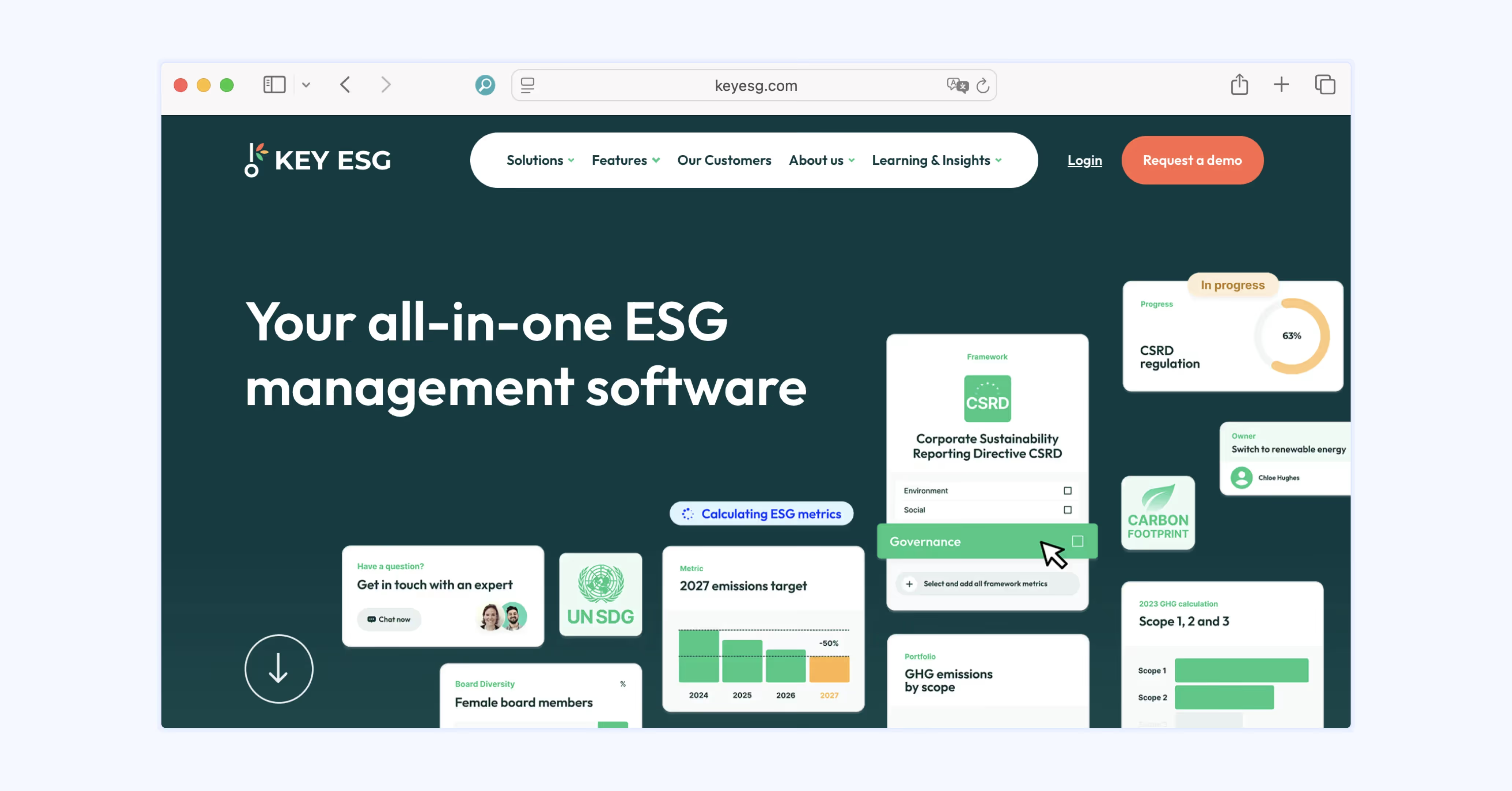
KeyESG (UK-based, founded ~2020) offers a modular AI-enhanced ESG platform focused on carbon accounting and compliance (CSRD, SFDR, IFRS) with strong support for fund managers .
UK, serving global enterprises and asset managers
Private equity firms, portfolio companies, mid-to-large businesses scaling ESG efforts
ESG leads for setup; supports CSV/API ingestion and internal management via dashboards
Tiered SaaS; ballpark €30k–€150k/year depending on scale and modules

Greenomy, a Belgian B Corp, provides AI-powered ESG and carbon reporting software designed for EU regulations like CSRD, EU Taxonomy, VSME, with strong advisory support.
Brussels, Belgium; EU-wide coverage
Corporates and financial institutions preparing CSRD or sustainable finance filings
Dedicated ESG/data teams; optional advisory from Greenomy to onboard methodology and CSRD reporting
Blended subscription + advisory; typically from ~€40k/year
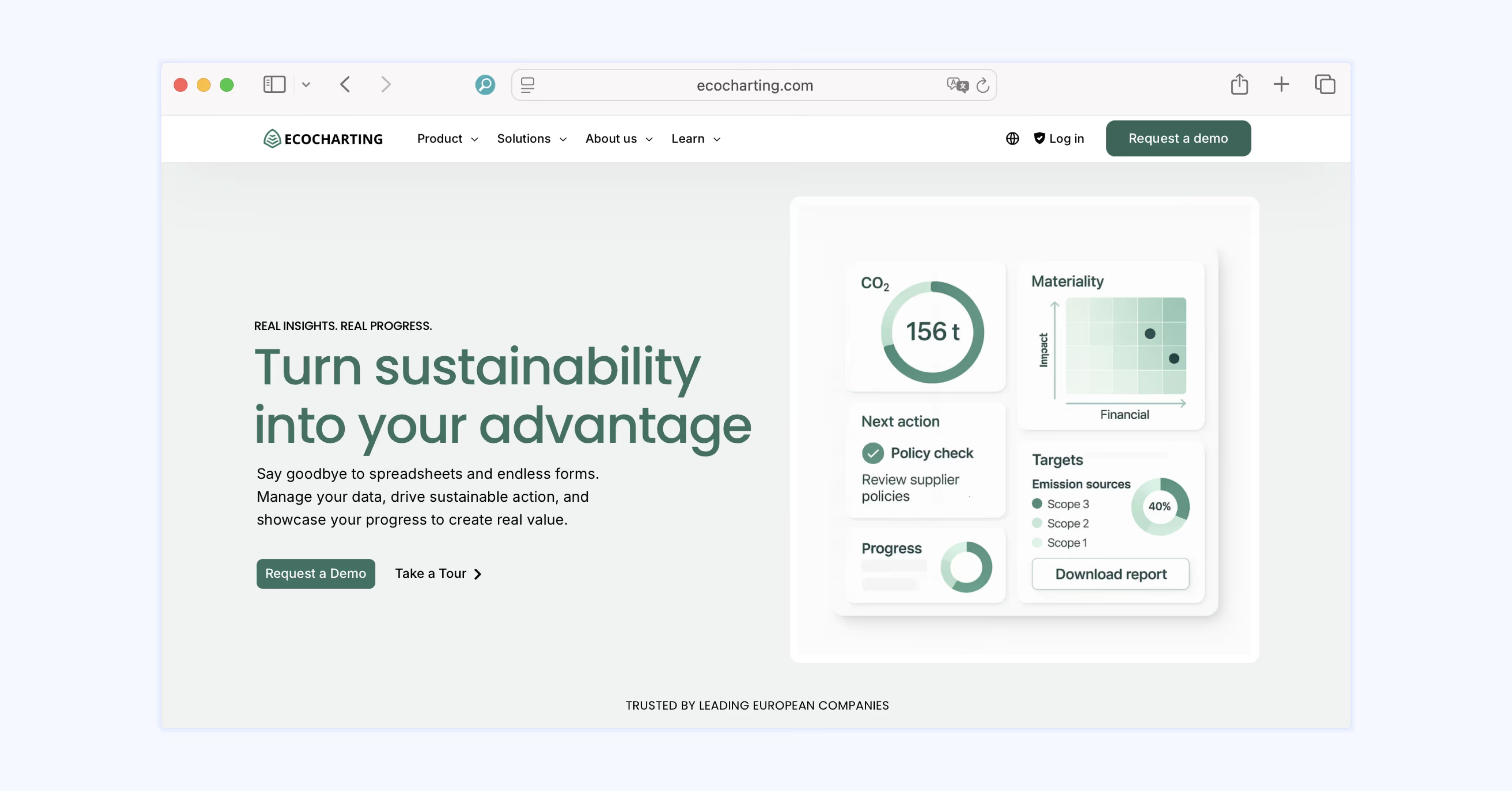
Ecocharting is a France‑based platform focused on helping companies take the first practical steps toward CSRD compliance. It combines expert workflows with guidance from accountants and sustainability pros with tools to build structured, audit‑ready CSRD reports.
France (serving European SMEs and mid-sized firms)
SMEs and mid-size organizations beginning their CSRD journey
Sustainability lead or finance manager; guided workflows reduce need for heavy tech or consulting support
Modular subscription, estimated €10 k–€50 k/year depending on number of entities and reports
{{custom-cta}}
Let’s take a quick look at some of the most frequently asked questions when it comes to carbon accounting tools.
The CSRD sets stringent requirements for sustainability disclosures within the EU. Accurate carbon accounting is fundamental here as it provides the critical emissions data that organizations need to meet CSRD requirements. This is in turn essential to demonstrate a company’s environmental performance transparently.
The EU Taxonomy is a classification system identifying which business activities are environmentally friendly, helping investors and companies support the EU’s climate goals.
Carbon accounting supplies an essential data point that contributes to a company’s resulting score which showcases how companies' economic activities stack up against specific criteria for sustainability, including their GHG emissions. To understand the framework in greater detail, visit this explainer on the EU Taxonomy and how it will work in practice.
While closely related, carbon accounting and carbon management serve different purposes. Carbon accounting focuses on the measurement and reporting of greenhouse gas emissions, giving you a clear picture of your organization’s carbon footprint. In contrast, carbon management uses this data to develop targeted strategies aimed at reducing emissions over time.
In other words, accounting answers “what” your emissions are, while management tackles “how” to reduce them.
Choosing carbon accounting software involves considering several factors. Firstly, assess your organization's specific needs and goals related to carbon tracking. Look for software that can measure and monitor emissions relevant to your industry or operations.
Consider the software's reporting capabilities, data integration features, and ease of use. Additionally, check if the software aligns with recognized carbon accounting standards like the Greenhouse Gas Protocol or ISO 14064.
The most widely used carbon accounting method is the Greenhouse Gas Protocol (GHG Protocol). It is a globally accepted standard developed by the World Resources Institute (WRI) and the World Business Council for Sustainable Development (WBCSD).
The GHG Protocol categorizes emissions into three scopes:
Carbon accounting can be accurate when based on reliable data and well-established methodologies such as the GHG Protocol.
The accuracy depends on the quality of data collected, the comprehensiveness of the methodology used, and the implementation of robust tracking and reporting processes. Regular audits and verification can further enhance the accuracy of carbon accounting results.
Carbon accounting is not the same as financial accounting. Financial accounting focuses on tracking and reporting an organization's financial transactions and performance, including revenues, expenses, and profits.
On the other hand, carbon accounting deals with measuring and managing an organization's greenhouse gas emissions and environmental impact, with the aim of understanding and reducing its carbon footprint.
Carbon accounting and GHG accounting are often used interchangeably, but there is a subtle difference between the two.
Carbon accounting typically refers to the specific measurement and management of carbon dioxide (CO2) emissions, while GHG accounting covers a broader scope, including all greenhouse gas emissions like methane (CH4), nitrous oxide (N2O), hydrofluorocarbons (HFCs), and others.
One of the most notable and successful carbon capture projects is the "Sleipner Project" in Norway. Operated by Equinor (formerly Statoil), the Sleipner Project has been in operation since 1996. It involves capturing and storing approximately one million tons of CO2 annually from a natural gas field in the North Sea by injecting it into a deep saline aquifer.
Two prominent carbon sequestration methods are afforestation/reforestation and carbon capture and storage (CCS). Afforestation involves planting trees on land that was not previously forested, while reforestation focuses on replanting trees on areas that were previously deforested.
CCS, as mentioned earlier, involves capturing CO2 emissions from industrial processes or power plants and permanently storing them in geological formations underground.
Collecting data for carbon accounting typically involves gathering information on energy consumption, fuel usage, transportation, waste generation, and other activities that result in greenhouse gas emissions.
Data can be collected through various means, such as utility bills, emission factors for fuels, activity data, and direct measurements using sensors or monitoring equipment. Get in touch with Coolset if you’d like to find out more.
The cost of carbon accounting can vary depending on the scale of the organization and the complexity of its operations.
Some carbon accounting software may have subscription-based pricing, while others may charge based on the number of emissions sources being tracked or the volume of data processed. Additionally, costs may include training, implementation, and, if desired, third-party verification expenses.
The future of carbon accounting is likely to be increasingly important as the world shifts towards more sustainable practices and governments implement stricter regulations on carbon emissions.
Advances in technology and data collection methods may lead to more accurate and automated carbon accounting processes. Integration of carbon accounting with broader sustainability metrics and reporting will also be a trend in the future.
An example of carbon accounting is a multinational company tracking its carbon emissions across various subsidiaries and operations worldwide.
By using carbon accounting software like Coolset, the company can monitor emissions from its manufacturing plants, offices, transportation fleet, and supply chain.
The data collected enables the company to identify emission hotspots, set reduction targets, and develop strategies to minimize its overall carbon footprint, contributing to its sustainability goals and corporate social responsibility initiatives.
The best carbon accounting software for your business will streamline emission tracking and management. It should provide detailed Scope 1, 2, and 3 emission measurements and enable deep insights into your carbon footprint.
A good example is Coolset, which offers granular breakdowns on emission hotspot categories, high impact vendors and single transactions, empowering informed decarbonization strategies.
The platform should integrate a comprehensive emission factor database and employ advanced automation for accurate and reliable measurements, ensuring GHG protocol compliance. It should also allow for proactive emission reduction planning, with features like a net zero strategy builder, emission deep-dives, automated reporting and progress tracking.
Certified carbon offset offerings and actionable reduction recommendations are key features to look for, allowing businesses to balance unavoidable emissions and move closer to their net zero goals. The software should also facilitate easy compliance with upcoming regulatory standards such as the EU CSRD via the European Sustainability Reporting Standards (ESRS).
Finally, consider the provider's commitment to long-term partnerships. The best software is backed by a team that’s ready to assist with setup and ongoing use, serving as a valuable partner in your upcoming sustainability journey.
Try Coolset's carbon accounting software tool
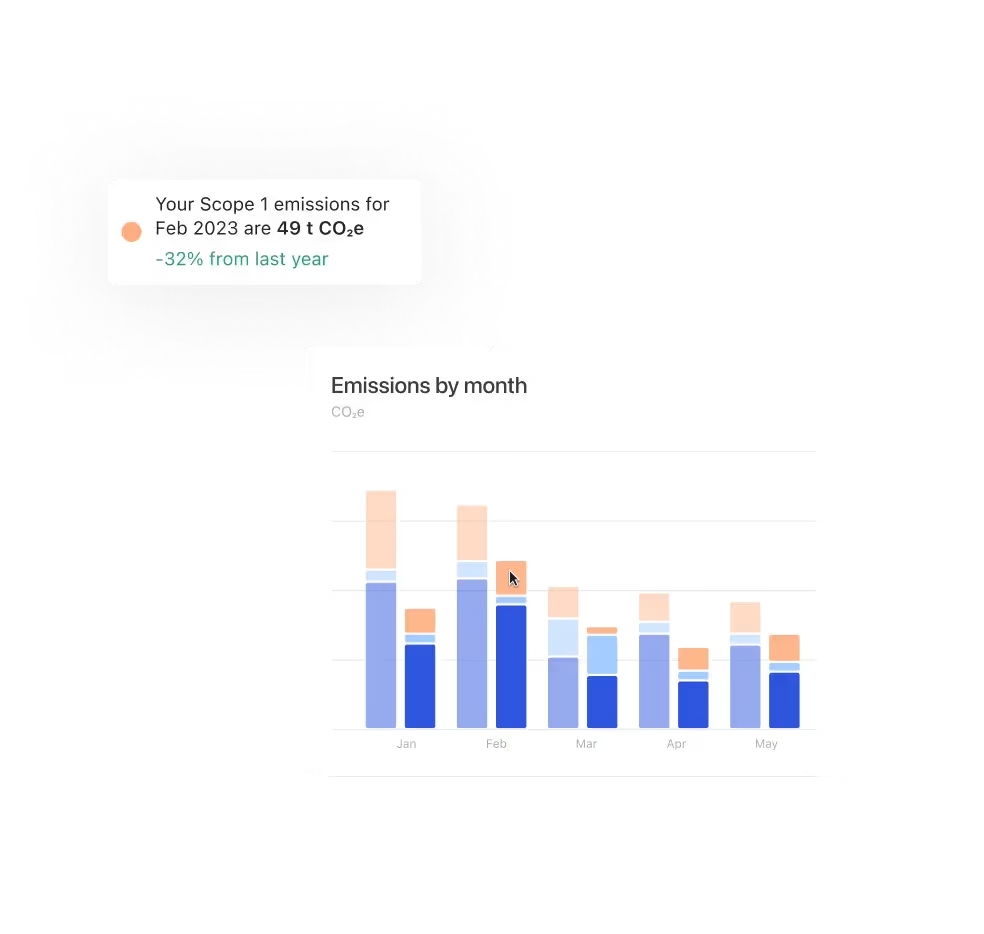
Try Coolset's carbon accounting software tool